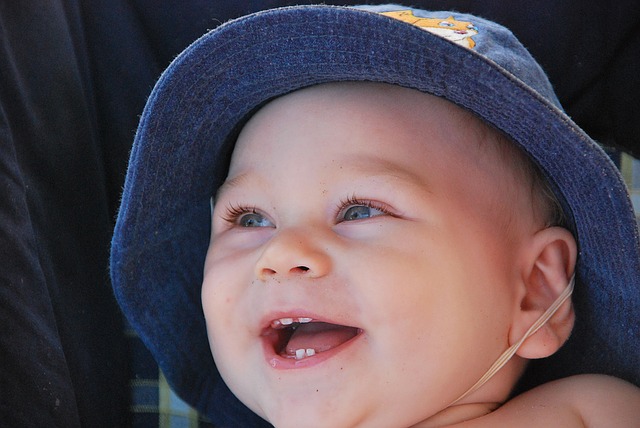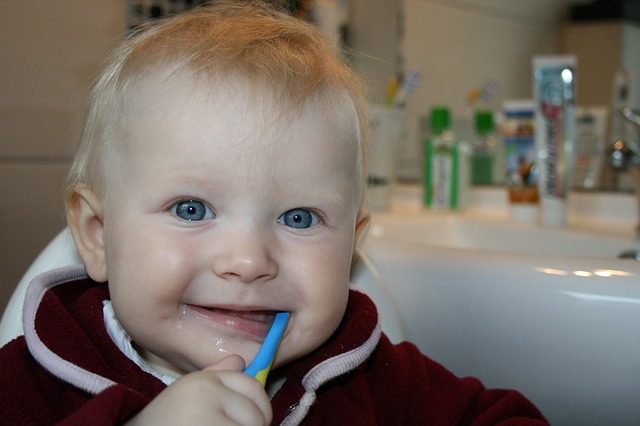Are you seeing tiny red splotches on your baby’s chin, neck, and chest?
Congratulations! Your child could be reaching a development milestone as it may be teething rash, one of the signs your baby is having pearly whites.
But when does that exactly happen?

When do babies start teething?
On the average, babies start teething when they’re 6 months old. It’s about the same time they are ready for solid foods. Other babies can start teething anytime between 3 to 12 months.
But, did you know that there are babies born with teeth? In fact, .05% of babies are born with natal teeth. That’s 1 out of 2000 infants! Pretty common, huh?
If your baby, however, is 18 months old, and still there are no signs of any tooth coming out, you may want to have it checked by a pediatric dentist.
Regardless, however, of the time your baby starts teething, you’ll know your little one is starting to have teeth when you see the following symptoms.

Signs of teething
Each baby may show different signs of teething. Some of them may have all of the following, some may just show a few, while for some lucky ones, there are no signs at all.
- Drooling
- Swollen gums
- Irritability
- Wanting to bite everything
- Sleep problems
- Not eating
Note that these are the signs of teething recognized by the experts. However, there are moms who swear that loose bowel, low fever, and vomiting are also symptoms their babies exhibited during this milestone.
Be careful though.
If your baby is feeling lethargic while these unrecognized symptoms are showing, do not hesitate to call your doctor.
Also, note that signs of teething do not immediately precede the actual teething process. Some babies show teething symptoms months before the first tooth comes out.
Why does teething rash happen?
You may have noticed that rash is not mentioned in the above symptoms, but teething rash is not uncommon for babies who are cutting teeth. It is because of the first sign listed—drooling.
When a tooth is about to appear from our babies’ gums, it stimulates a lot of saliva production. And the saliva usually ends up on the chin, neck, and chest.
The constant drip causes the rashes, especially if we let the saliva touch our babies’s skin for a long time without drying it. Because it stays wet for quite some time, it attracts germs that may cause the rash.
Other times, the saliva itself contains other elements such as milk residue which may irritate our babies’ skin, again causing teething rash.
How to prevent teething rash from getting worse
Rashes caused by teething may be totally difficult to prevent. But we can always stop it from turning into something worse with the following help:
Keep your baby dry. Always wipe the saliva off your baby’s face and body and regularly change your baby’s clothes. Using bib or burp cloth is also highly recommended.
Use cool fabric. In areas with a tropical climate, the weather may make your baby sweat, which can worsen the rashes. So make sure your little one is dressed in breathable fabric such as cotton.
Wash with warm water. At least twice daily, wash the affected areas with warm water. Afterward, slowly pat these areas dry. This will lessen the itchiness of the rashes.
Use ointments. Petroleum jelly may act as a skin protectant against saliva. Add a thin layer of this after every bath.
Avoid irritants. The fragrance in a scented baby wash may worsen the rashes, so avoid using them for the time being. Also, use fragrance-free soaps for washing your baby’s clothes and linens.
So again, why does teething rash happen?
It’s a natural occurrence for babies who have a whole lot of extra saliva in their mouth that they can’t stop drooling. Most of the time, it’s nothing to worry about.
But if the teething rash seems to be more than just a rash, like it has turned into some skin infection, talk to your doctor about it.
This is a guest post
